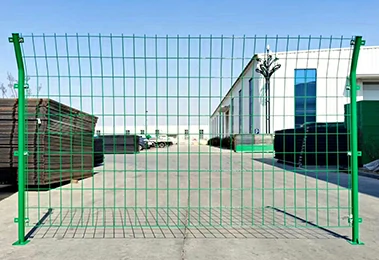 TEL:
+86-13102802206
TEL:
+86-13102802206
 Email:
fencenetting@china.com
Email:
fencenetting@china.com
 Language
Language
 TEL:
+86-13102802206
TEL:
+86-13102802206
 Email:
fencenetting@china.com
Email:
fencenetting@china.com
 Language
Language


Understanding the Different Kinds of Barbed Wire
Barbed wire is an essential fencing material that has been widely used for agricultural, security, and construction purposes since its invention in the late 19th century. Its primary function is to deter animals and intruders from crossing boundaries. Over the years, various kinds of barbed wire have been developed, each designed for specific uses and environments.
One of the most common types of barbed wire is the single-strand barbed wire. This form consists of a single strand of wire with barbs spaced out at regular intervals. It is often used in rural areas to contain livestock and protect crops. Its lightweight and easy installation make it a popular choice among farmers, who can quickly set up fences without much equipment.
Another widely recognized type is double-strand barbed wire. This variety incorporates two strands of wire twisted together with barbs, offering enhanced strength and durability. It is ideal for more robust fencing needs, such as securing properties or protecting sensitive areas. The added thickness and tension in double-strand wire make it harder to cut or climb over, providing better security against intruders.
For those needing increased deterrence, razor wire is a preferred option. Razor wire features sharp, pointed barbs that are closely spaced, making it extremely difficult and dangerous to breach. This type is commonly used in military installations, prisons, and secure facilities. Its intimidating appearance often acts as a psychological barrier, discouraging potential trespassers.

Electric barbed wire combines traditional barbed wire with an electric fence system. This innovative approach enhances security by delivering an electric shock upon contact, creating an additional layer of defense. Electric barbed wire is often used in high-security zones and on farms where livestock containment is critical while still providing freedom of movement.
In more specialized applications, high-tensile barbed wire is utilized for its unique properties. Made from steel with high tensile strength, this type can withstand harsher weather conditions and considerable tension without breaking. It is particularly useful in areas with rough terrain or where frequent maintenance is not feasible.
Lastly, options like coated barbed wire, which is coated with materials like PVC, offer extra longevity and resistance to rusting, making them an excellent choice for regions with harsh climates.
In conclusion, the variety of barbed wire available ensures that there is a suitable option for every need, whether for agricultural use, security, or special applications. Understanding the characteristics and benefits of each type can help individuals and businesses make informed decisions when selecting the best fencing solutions.